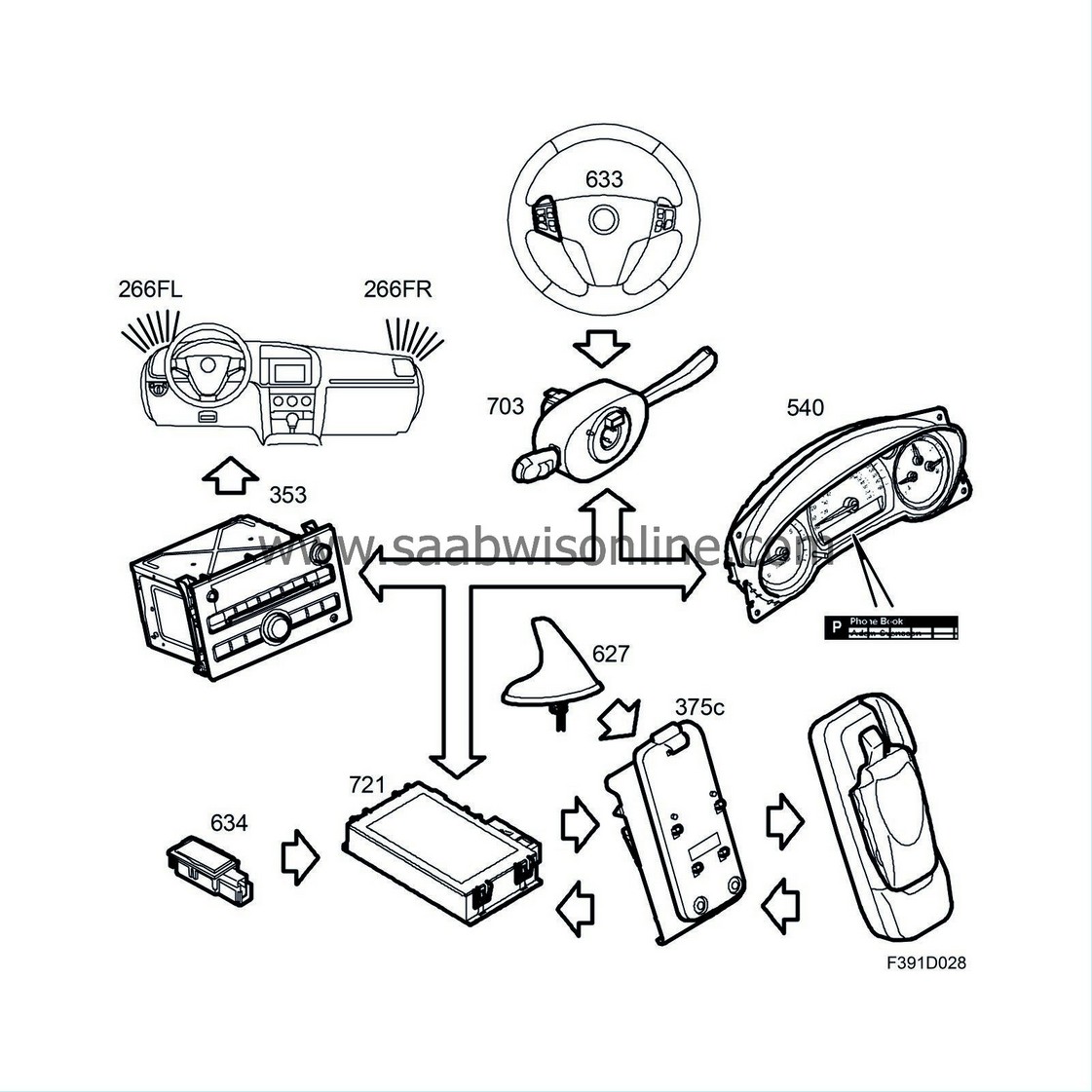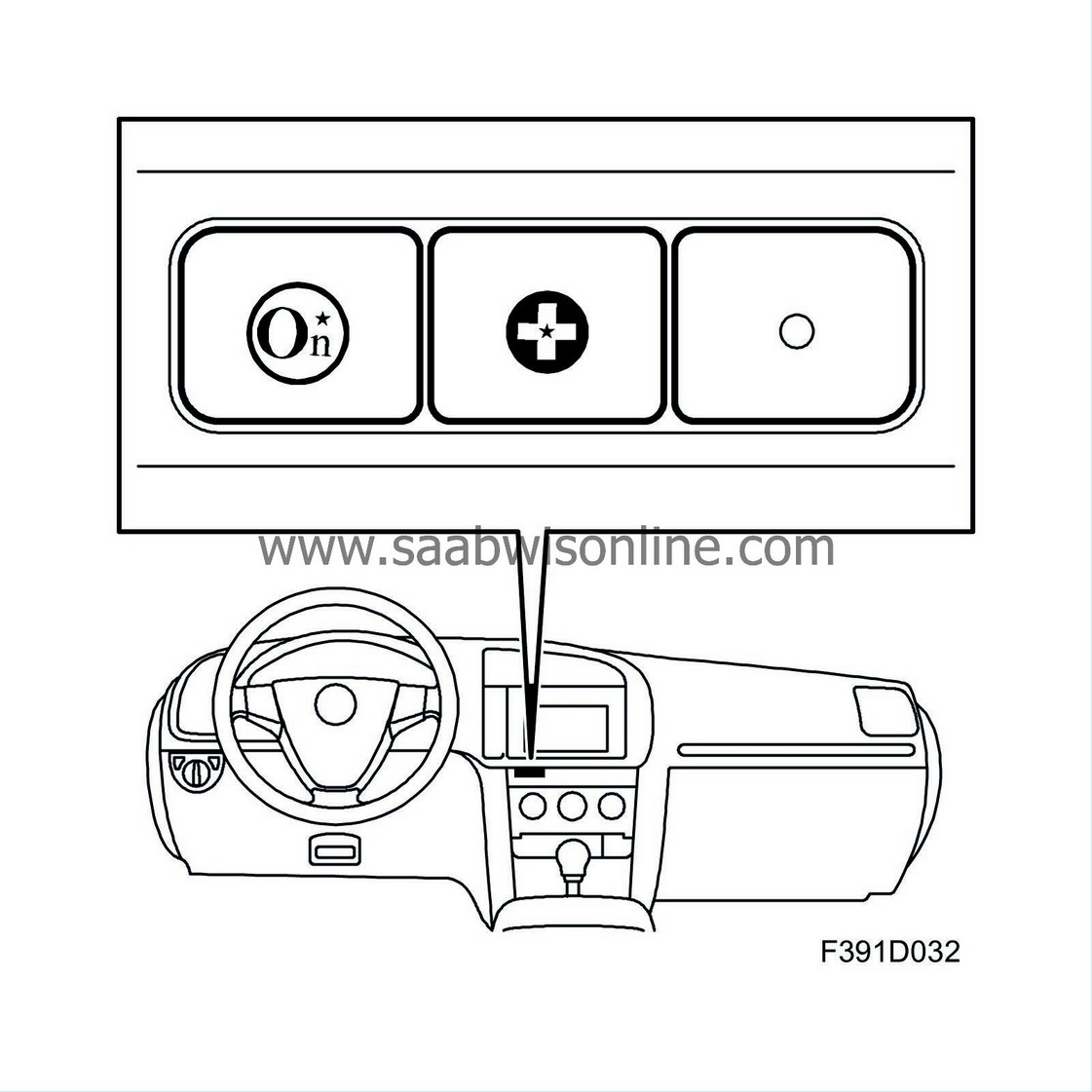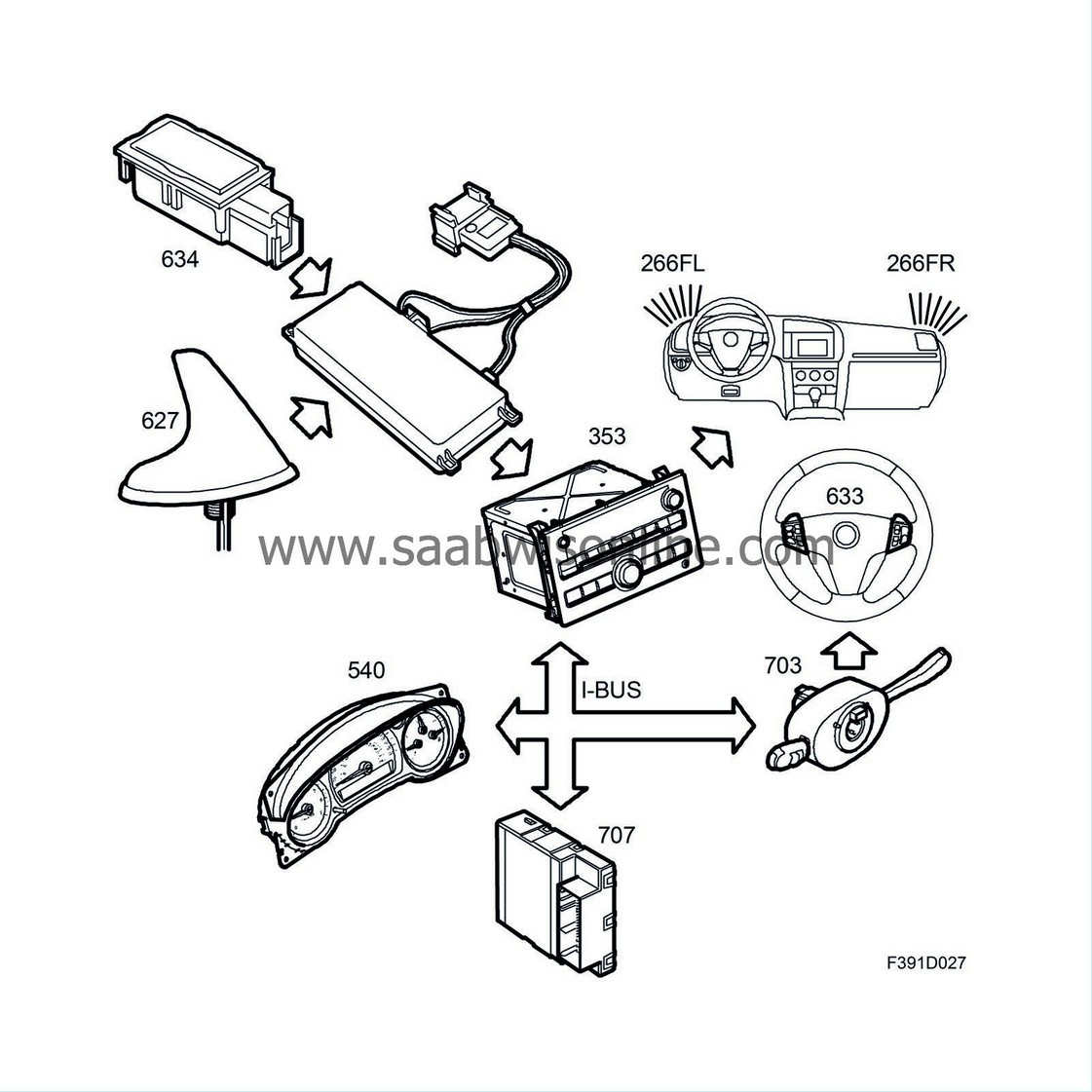Detailed description, Communication
| Detailed description, Communication |
| UHP |

Universal Handsfree Phone (UHP) means that the car is equipped with a UHP control module that is connected to a microphone, radio unit, I-bus and a bracket. The bracket is connected to the roof antenna and is located in the floor console's storage compartment. The holder, which is unique to each mobile phone, is fastened and connected to the bracket. SID displays selected telephone functions.
The steering wheel controls can be used for incoming and outgoing phone calls, volume adjustment and to browse among and select numbers from the phone book or call list.

The microphone in the roof panel is used for speaking and the car's standard audio system is used as speakers. The making and storage of calls can be voice-controlled.
The push-to-talk button can be used to add voice tags in the phone book. These voice tags can be used to make calls to various telephone numbers simply by pressing the push-to-talk button and then saying the name of the person you wish to call. When you say the name, the system repeats it and them dials the number. This is a great benefit since the driver never needs to release the steering wheel, which makes driving safer. More information on voice activation is found in the vehicle Owner's Manual.

The UHP control module is connected to the wiring harness and communicates on the car's I-bus. The UHP control module is fastened to the floor with a bracket in front of the gear lever/gear selector.
There are two ways to connect the mobile phone to the car's UHP system:

| • |
The mobile phone with holder is fastened into the car's bracket. The holder must be designed for the mobile phone. When the mobile phone battery is to be charged and connected to the vehicle antenna, it is put in the holder and anchored to the bracket.
|
|
| • |
Wireless connection between the mobile phone and system is possible with the Bluetooth function. The UHP control module has the *Bluetooth function with integrated antenna. Mobile phones with Bluetooth can be coupled with UHP. The mobile phone then uses its own battery and antenna.
|
|
In both cases, the mobile phone is controlled with the steering wheel controls and voice control. SID displays selected telephone functions and indicates that one is within an area with GSM coverage.
*Bluetooth is wireless technology that works in the license-free ISM band (Industrial Scientific Medical) of 2.4 GHz. Bluetooth has a short range and is designed for communication in a personal network, such as between a mobile phone and a computer.
In order for the system to function properly, the SIM card must be installed and the correct PIN must be entered. You should be located within a GSM coverage (EU) area, which is visible in the SID when the text TELE is displayed. NO TELE is displayed if coverage is insufficient.
| OnStar |
OnStar means that the car is equipped with a telematics unit and an OnStar button for summoning help, guidance with several services and emergency assistance in the event of an accident. Contact the OnStar Call Centre simply by pressing the OnStar button. An operator will answer and provide answers to your questions or help. The system is only operational when you are in an area with AMPS coverage (US).

The system comprises a telematics unit with GPS unit, GPS antenna, OnStar button, microphone and mobile phone antenna. The GPS and phone antennae are integrated in the same unit and positioned on the roof of the car. The system uses the entertainment head unit to reproduce the voice of the operator.

The system calls the alarm centre in the event of a collision in which the airbags were deployed. With the help of GPS, the car's position is located, which makes it easier for rescue workers to arrive to the scene more quickly. At the customer's request, the OnStar Call Centre can remote control the car's hazard warning lights and horn to aid rescuers in locating the car.
The telematics unit, radio and control panel communicate with each other via the I-bus.
The telematics unit has a flash memory, which means that additional features can be SPS programmed.



